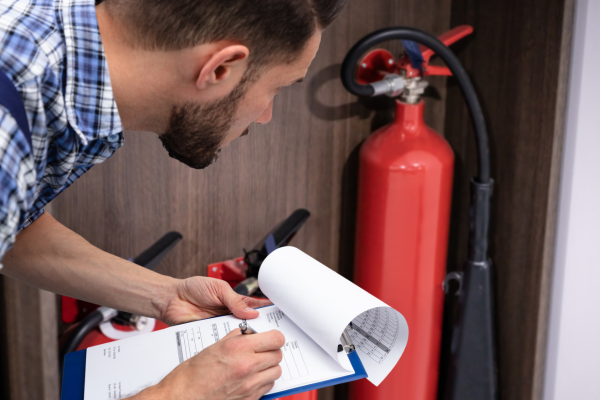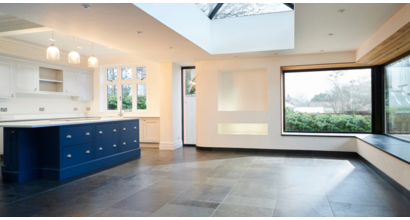The financial success of your buy-to-let depends on the investment making a profit, and both the property value and your profits at least keeping up with inflation.
So, before buying, it’s essential to carry out extensive research on prices, trends and demand in your area, and ‘stress test’ your figures for rental income, expenditure and capital growth, to be as sure as you can that your investment will be a long-term success.
Here are 7 of the most common reasons why buy to let investments fail, and what you can do to avoid these pitfalls:
1. The property price doesn’t rise in line with inflation
If the value of your investment doesn’t increase by at least the rate of inflation – i.e. keep up with the rising cost of goods and services - that means it will be worth less and less in real terms over time. In practical terms, if you were to sell, the equity you’re left with would buy less than it would have done at the time you bought it.
There are two main ways to protect yourself against any drop or fluctuation in price:
- Buy at below the true market value of the property so that you gain ‘instant equity’. You need to find a seller who is very motivated and able to accept a low offer – perhaps they’ve already found their next dream home and don’t want to lose it, or it’s an inherited property and they need to release the capital. It’s also much easier to negotiate on price when the market is quiet and there are more properties for sale than buyers looking. And if you’re able to buy with cash and can complete the transaction quickly, that should give you extra bargaining power.
- Carry out solid research online and by speaking to experienced local estate agents, to find out which types of property in which specific areas have consistently risen best in value over the past 20 years. You can search the Land Registry, right down to a local authority area and property type, and we are always very happy to help you find the right investment, just get in touch with your local branch and have a chat with the team.
2. The ongoing property costs rise too high
Your monthly profit depends on keeping your expenditure as low as reasonably possible, so it’s important to keep a close eye on your costs. If you have a buy-to-let mortgage, that’s likely to be your biggest monthly outgoing, and in 2023 we saw the impact of mortgage interest rates doubling and even trebling for landlords coming off fixed-rate deals.
While that was an abnormal period, it highlighted the importance of looking at how interest rate rises would impact the profitability of your investment. So, before investing, work out what your break-even point would be – i.e. how high would interest rates have to rise to wipe out your monthly profit? We’d recommend you work on the basis that the long-term average mortgage rates are 5-6% and always ensure you have a ‘buffer’ of around 3%.
In addition, do monitor your income and expenditure on a monthly basis and shop around periodically to make sure you aren’t paying more than necessary for regular goods and services.


3. It costs too much to ensure the property meets health and safety regulations
Before buying, make sure you know exactly what health and safety regulations apply to your particular type of let – and check for any new legislation that might be in the pipeline - so you can make sure you know the cost implications of keeping your property compliant. If you don’t research this properly, you could end up with a property that you simply can’t afford to let.
If you are planning to let the property as an HMO, understand that it will cost you more to meet fire regulations and licensing criteria, so it’s particularly important to make sure you budget properly.
4. The cost of major works is much higher than anticipated
Every so often, your property will require an injection of capital for things like a new kitchen or bathroom, a new boiler, repointing and roof repairs. And if you don’t have the funds to pay for them, you may not be able to keep the property legally compliant and in an appealing enough condition to attract new tenants.
To make sure you don’t get caught out, put together a plan and budget for what works are likely to be required over the next 15 years, so you can put money aside from your profits each month to cover them. Then review the costs and update your budget every 6-12 months, as prices will rise over time with inflation.


5. Low demand and void periods wipe out profits
If there isn’t enough tenant demand to keep your property consistently let, and you end up with it vacant for weeks at a time between tenancies, that could easily wipe out several months’ profits.
So, when you’re searching for an investment property, find out from experienced local letting agents which types of property in which locations are consistently in high demand and short supply. And keep up to date with current tenant wants and needs, so you can ensure your rental always offers the style and amenities they’re looking for.
6. Rents can’t be raised in line with inflation
If there is low demand for your rental, or an economic downturn that means wages aren’t rising, you may not be able to increase the rent each year in line with inflation. And if you’re not able to reduce your costs to compensate, as happened to some landlords when mortgage costs rose, that means profits could reduce.
That’s why it’s important to buy a property that is likely to always be in high demand (see above) and make sure that you have enough of a profit cushion to be able to ride out any temporary downturn in the market.
7. Net (post-tax) profits are much lower than expected
Property tax can be quite complicated and it’s especially important to understand how rental income can affect your other earnings and tax liability. For instance, it could push your earnings into a higher tax bracket or mean you’re no longer eligible for child benefit.
If you’re not aware in advance of how much tax you will have to pay each year, you may be left with far less profit in your pocket than you expected – and that might mean your buy-to-let is no longer a viable investment for you.
That’s why it’s essential to consult a property tax specialist before investing. They can explain all your liabilities and advise you on the most tax-efficient way to own and operate your buy-to-let, and help ensure your investment is a financial success.
If you would like to discuss any aspect of buy-to-let, our experts are always here to help. Just get in touch with your local branch and speak to one of the team.









